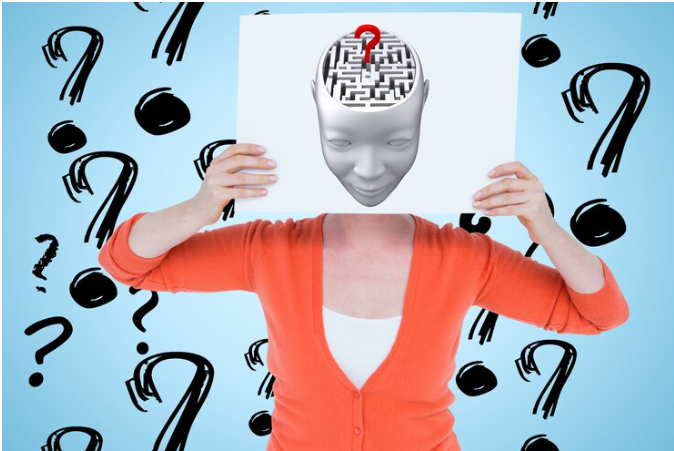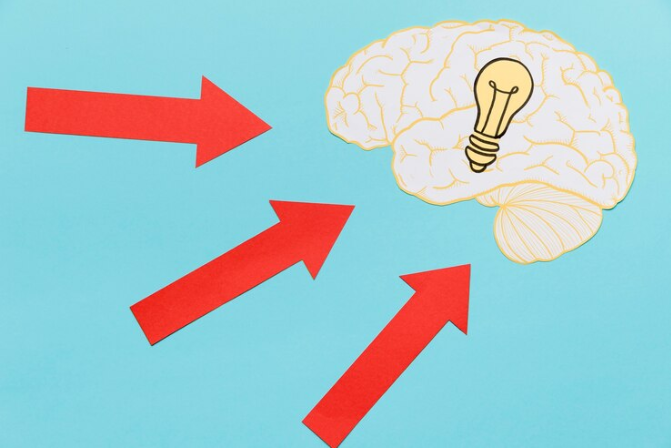Four Digits To Memorize NYT: Best Tools and Tips for Mastery
Introduction
Four Digits To Memorize NYT might seem like a small feat, but it’s a fundamental skill that can boost cognitive functions, improve memory, and enhance daily tasks. This article dives into various techniques and strategies to master the art of Four Digits To Memorize NYT.
Why is Four Digits To Memorize NYT Important?
Four Digits To Memorize NYT is a practical skill often used in daily life, from remembering PIN codes to recalling phone extensions. The importance of this skill lies in its frequent application and the mental agility it promotes. Strengthening this ability can lead to better memory retention overall, which is beneficial for both personal and professional settings.

Popular Questions and Outlines
Table of Contents
What are Effective Techniques for Four Digits To Memorize NYT?
Four Digits To Memorize NYT can be approached through several effective techniques, each leveraging different cognitive functions. Here are ten paragraphs detailing some of the most popular and successful methods:
Chunking: Breaking down the Four Digits To Memorize NYT into smaller, manageable chunks can significantly enhance memory retention. For example, instead of memorizing 1234 as one sequence, you can split it into 12 and 34. This reduces cognitive load and makes it easier to recall.
Repetition: Repeatedly writing or saying the digits out loud helps reinforce the memory. This technique leverages the brain’s natural ability to remember information that is frequently encountered.
Association: Associating the digits with familiar objects or scenarios can make them more memorable. For instance, linking 1984 to the year of a significant event in your life can help in recalling the number easily.
Visualization: Creating a mental image that incorporates the digits can enhance recall. Visualizing the number 5678 as a sequence on a digital clock or a street address can make it more memorable.
Storytelling: Crafting a simple story around the digits can aid in memorization. For example, 2468 can become “24 cats and 68 dogs,” creating a narrative that makes the numbers easier to remember.
Rhymes and Rhythms: Creating a rhyme or a rhythmic pattern with the digits can make them stick in your memory. “1, 2, buckle my shoe; 3, 4, close the door” is an example of how rhythm can aid memorization.
Grouping: Similar to chunking, grouping involves categorizing the digits into a pattern or a familiar format. Phone numbers and dates are often grouped in a way that makes them easier to remember.
Using Mnemonics: Employing mnemonic devices, such as the acronym method, can help. For instance, the digit 1234 can be memorized by creating a phrase where each word starts with the same letter as the digit, like “1 Sun, 2 Shoes, 3 Trees, 4 Doors.”
Practice with Real-life Scenarios: Incorporating the digits into daily activities, like memorizing a new phone number or a PIN code, can provide practical and frequent practice.
Cognitive Mapping: Developing a cognitive map of the digits within a familiar environment, such as imagining them placed in different rooms of your house, can create a vivid and easily retrievable memory.
How Does Chunking Help in Four Digits To Memorize NYT?

Chunking is a powerful method to enhance memory retention, especially when dealing with numbers. This technique involves breaking down information into smaller, more manageable units or chunks. Here’s an in-depth look into how chunking can assist in Four Digits To Memorize NYT:
Reducing Cognitive Load: The human brain can only process a limited amount of information at a time. Chunking reduces the number of items the brain needs to remember by grouping them, thus decreasing cognitive load.
Enhancing Patterns: Chunking helps in identifying patterns within the digits, making them easier to remember. For example, 2021 can be chunked into 20 and 21, two familiar numbers, rather than four individual digits.
Facilitating Recall: By creating meaningful units, chunking makes it easier to retrieve information from memory. For instance, if you chunk 1234 as 12 and 34, you only need to recall two numbers instead of four.
Improving Focus: Chunking helps focus your attention on smaller segments of information, which can improve concentration and make the memorization process more efficient.
Utilizing Short-term Memory: Short-term memory is more effective at holding a few chunks of information rather than many individual digits. Chunking leverages this capacity to improve retention.
Creating Associations: Chunking can also involve associating each chunk with something familiar. For example, if 5678 is chunked into 56 and 78, you might remember it as the year’s someone was born and graduated.
Enhancing Learning Techniques: This method is commonly used in various learning techniques, such as learning a new language or memorizing a phone number. It’s a versatile approach that can be applied to different types of information.
Reinforcing Through Practice: Regularly practicing chunking can enhance your brain’s ability to group information naturally, making memorization more intuitive over time.
Leveraging Existing Knowledge: Chunking allows you to use pre-existing knowledge to create meaningful groups. For example, you might chunk the digits 1492 as the year Columbus sailed to America.
Increasing Efficiency: Overall, chunking increases the efficiency of the memorization process by simplifying the information, making it quicker to learn and easier to recall.
What Role Does Visualization Play in Four Digits To Memorize NYT?

Visualization is a technique that involves creating mental images to represent information. This method can significantly enhance your ability to memorize four digits. Here’s how:
Creating Mental Images: By visualizing the digits as images, you create a mental representation that is easier to recall. For instance, you can imagine the number 1234 as a sequence on a digital clock.
Engaging Multiple Senses: Visualization often involves more than just seeing images in your mind; it can include hearing, touching, or even tasting. This multisensory approach can make memories more vivid and easier to retrieve.
Enhancing Memory Through Association: Associating each digit with a visual image can create a stronger memory. For example, visualizing 7 as a lucky charm and 3 as a tricycle can help you remember sequence 73 more effectively.
Creating Stories: Visualization can be combined with storytelling. For instance, imagine a journey where you encounter the digit 5678 at various points, like seeing 5 dogs, 6 cats, 7 birds, and 8 fish.
Utilizing Familiar Scenes: Placing the digits in familiar scenes, such as your home or workplace, can make them more memorable. Imagine the digit 2468 as being part of the house number on your front door.
Using the Method of Loci: This ancient technique involves visualizing a familiar place and placing each digit in a specific location within that place. For example, you can place 1 in the living room, 2 in the kitchen, 3 in the bedroom, and 4 in the bathroom.
Enhancing Engagement: Visualization makes the memorization process more engaging and enjoyable. Creating vivid mental images can transform a mundane task into an interesting challenge.
Supporting Long-term Memory: Visual images are often easier to store in long-term memory than abstract numbers. By converting digits into images, you enhance the likelihood of long-term retention.
Improving Retrieval: When you need to recall the digits, visualizing the images you created can make the retrieval process quicker and more accurate.
Practicing Regularly: Like any skill, visualization improves with practice. Regularly using visualization to memorize digits can enhance your overall memory capabilities.
How Can Mnemonic Devices Aid in Four Digits To Memorize NYT?

Mnemonic devices are tools that help in memorizing information by associating it with familiar concepts. These devices can be particularly effective for memorizing four digits. Here’s how:
Creating Acronyms: One common mnemonic device is creating an acronym from the digits. For example, 1234 can become “1 Sun, 2 Shoes, 3 Trees, 4 Doors,” where each word starts with the same letter as the digit.
Using Rhymes: Rhymes and rhythmic patterns can make numbers easier to remember. For instance, the sequence 5678 can be remembered with a rhyme like “5, 6, pick up sticks; 7, 8, lay them straight.”
Employing Imagery: Associating each digit with a visual image can create a memorable mnemonic. For example, you might imagine the number 3 as a tricycle and the number 9 as a balloon.
Linking to Familiar Objects: Creating a link between the digits and familiar objects can aid in recall. For instance, 2468 can be linked to common objects like “2 hands, 4 legs, 6 strings on a guitar, 8 wheels on two cars.”
Using the Peg System: The peg system involves associating numbers with specific words or images (pegs). For example, 1 is a gun, 2 is a shoe, 3 is a tree, and 4 is a door. To remember 1234, you visualize a gun (1), a shoe (2), a tree (3), and a door (4).
Storytelling: Creating a story that includes the digits can make them easier to remember. For example, the story for 1357 could involve a scenario like “1 rabbit, 3 dogs, 5 cats, and 7 birds living in a house.”
Using Letter and Number Substitution: Some mnemonic devices involve substituting letters for numbers. For example, A=1, B=2, C=3, D=4, etc. Thus, 1234 could be remembered as ABCD.
Creating Silly Sentences: Forming a silly sentence with words that start with the same digits can be helpful. For instance, 4321 could become “4 Four-legged animals, 3 Three-legged stools, 2 Two-toed sloths, and 1 One-horned unicorn.”
Combining Methods: Using a combination of these mnemonic devices can enhance memorization. For example, you might combine acronyms with storytelling to create a more robust memory aid.
Practicing Consistently: Like all memorization techniques, regular practice with mnemonic devices will improve your ability to recall information efficiently.
What Are Some Common Mistakes to Avoid When Four Digits To Memorize NYT?

Four Digits To Memorize NYT may seem straightforward, but several common mistakes can hinder the process. Here are ten mistakes to avoid and how to overcome them:
Lack of Focus: Trying to memorize numbers without paying full attention can lead to poor retention. Ensure you are in a quiet environment with minimal distractions when memorizing digits.
Overloading Information: Attempting to memorize too many digits at once can overwhelm your brain. Stick to four digits at a time to avoid overloading your memory.
Ignoring Patterns: Failing to recognize and utilize patterns within the digits can make memorization harder. Look for patterns or associations to simplify the process.
Skipping Practice: Regular practice is essential for retaining information. Skipping practice sessions can lead to forgetting the digits. Set aside time each day to practice.
Using Ineffective Techniques: Not all memorization techniques work for everyone. Experiment with different methods to find the one that works best for you.
Relying Solely on Repetition: While repetition is important, relying solely on it without other techniques can be less effective. Combine repetition with other methods like chunking or visualization.
Not Taking Breaks: Continuous memorization without breaks can lead to mental fatigue. Take short breaks to rest your brain and improve overall retention.
Inconsistent Methods: Using inconsistent or random methods for memorization can confuse your brain. Stick to a consistent technique for better results.
Negative Mindset: Approaching memorization with a negative attitude can impact your ability to remember. Stay positive and confident in your ability to memorize the digits.
Not Reviewing: Failing to review the digits after memorizing them can lead to forgetting. Regularly review the digits to reinforce the memory.
How Can Regular Practice Improve Your Ability to Four Digits To Memorize NYT?

Regular practice is crucial for enhancing your ability to memorize four digits. Here’s how consistent practice can improve your memory:
Reinforcing Neural Pathways: Repeatedly practicing memorization strengthens the neural pathways in your brain, making it easier to recall information.
Building Muscle Memory: Just like physical exercise, regular mental practice builds ‘muscle memory’ in your brain. The more you practice, the more automatic the recall process becomes.
Increasing Retention: Consistent practice helps move information from short-term to long-term memory, increasing retention.
Improving Speed: Regular practice can speed up the memorization process. Over time, you’ll be able to memorize digits more quickly.
Enhancing Focus: Practicing regularly can improve your focus and concentration, making it easier to memorize and recall information.
Boosting Confidence: As you become more adept at memorizing digits, your confidence will grow, further improving your ability to remember.
Identifying Effective Techniques: Regular practice allows you to experiment with different techniques and identify which ones work best for you.
Reducing Anxiety: Familiarity with the process through regular practice can reduce anxiety and make memorization less stressful.
Maintaining Mental Agility: Regularly challenging your brain with memorization tasks keeps your mind sharp and agile.
Creating a Routine: Establishing a routine for practice can make memorization a habit, ensuring you continue to improve over time.
What Tools and Apps Are Available to Help Four Digits To Memorize NYT?

In the digital age, numerous tools and apps can assist in Four Digits To Memorize NYT. Here are some of the best options available:
Memory Games: Apps like Lumosity and Peak offer memory games designed to improve your overall cognitive functions, including number memorization.
Flashcards: Anki and Quizlet allow you to create digital flashcards for memorization. You can use these apps to create cards specifically for four-digit numbers.
Repetition Apps: Apps like Brainscape use repetition-based techniques to help reinforce memory. You can input four-digit numbers and practice recalling them.
Visualization Tools: Mind mapping apps like MindMeister can help you create visual representations of numbers, aiding in memorization through visualization.
Mnemonics Apps: Memrise uses mnemonic techniques to help with memorization. You can create custom mnemonics for four-digit numbers.
Number Puzzle Games: Games like Sudoku and Kakuro can improve your number memory and pattern recognition skills, indirectly aiding in memorizing digits.
Memory Training Courses: Online platforms like Coursera and Udemy offer courses on memory improvement, providing techniques and exercises to enhance your ability to memorize numbers.
Voice Recorders: Using a voice recording app, you can record yourself repeating the numbers and listen to them repeatedly to reinforce memory.
Habit Tracking Apps: Apps like Habitica and Streaks can help you establish a routine for regular practice, ensuring you consistently work on your memorization skills.
Personalized Coaching: Some apps like CogniFit offer personalized training programs based on your performance, helping you focus on areas that need improvement.
How Does Diet and Exercise Affect Your Memory, Particularly for Four Digits To Memorize NYT?

Diet and exercise play crucial roles in maintaining and improving memory. Here’s how they impact your ability to memorize four digits:
Brain-Healthy Foods: Consuming foods rich in antioxidants, healthy fats, vitamins, and minerals can boost brain function. Foods like blueberries, fatty fish, nuts, and seeds can enhance memory.
Hydration: Staying hydrated is essential for cognitive function. Dehydration can impair memory and concentration, so drink plenty of water.
Balanced Diet: A balanced diet with a mix of proteins, fats, and carbohydrates provides the energy needed for optimal brain function. Avoiding processed foods and sugars can prevent cognitive decline.
Exercise and Brain Health: Regular physical exercise increases blood flow to the brain, promoting the growth of new neurons and enhancing cognitive abilities. Activities like walking, running, and swimming are particularly beneficial.
Stress Reduction: Exercise reduces stress hormones and promotes the release of endorphins, which improve mood and memory. Lower stress levels enhance your ability to focus and recall information.
Improving Sleep Quality: Both diet and exercise impact sleep quality. Good sleep is crucial for memory consolidation, where short-term memories are converted into long-term ones.
Boosting Neuroplasticity: Physical activity enhances neuroplasticity, the brain’s ability to adapt and change, which is vital for learning and memory.
Enhancing Cognitive Function: Regular exercise improves overall cognitive function, including executive functions like problem-solving and planning, which indirectly support memory.
Preventing Cognitive Decline: A healthy diet and regular exercise can help prevent age-related cognitive decline, maintaining memory abilities as you age.
Mood and Motivation: Proper nutrition and regular exercise improve mood and motivation, making it easier to engage in memorization tasks and practice regularly.
What Are the Psychological Benefits of Being Able to Four Digits To Memorize NYT?

Four Digits To Memorize NYT may seem trivial, but it offers several psychological benefits. Here’s how mastering this skill can positively impact your mental well-being:
Improved Confidence: Successfully memorizing digits boosts your confidence in your memory and cognitive abilities, encouraging you to tackle more complex memory tasks.
Enhanced Focus: The process of memorizing digits requires concentration, which can improve your overall ability to focus on other tasks.
Stress Reduction: Achieving small memorization goals can reduce stress and provide a sense of accomplishment, contributing to overall mental health.
Increased Cognitive Flexibility: Regularly practicing memorization can improve cognitive flexibility, helping you adapt to new situations and solve problems more efficiently.
Better Academic Performance: Enhanced memory skills can lead to better performance in academic settings, as the ability to recall information is crucial for learning.
Boosted Creativity: Engaging your brain in memorization exercises can stimulate creative thinking by encouraging you to find new and innovative ways to remember information.
Stronger Neural Connections: The act of memorizing strengthens neural connections in the brain, promoting overall brain health and longevity.
Improved Time Management: The discipline required for regular memorization practice can improve your time management skills, helping you organize and prioritize tasks more effectively.
Greater Mental Agility: Regular memorization exercises keep your brain agile and capable of processing information quickly and accurately.
Enhanced Overall Memory: The skills and techniques developed while Four Digits To Memorize NYT can be applied to other areas, improving your overall memory and cognitive function.
How Does Age Affect Your Ability to Four Digits To Memorize NYT?

Age can impact your memory and cognitive abilities in various ways. Here’s how it affects your ability to memorize four digits:
Young Age: Children and young adults typically have more plastic and flexible brains, making it easier to learn and retain new information, including numbers.
Middle Age: During middle age, cognitive functions may begin to slow, but regular mental exercises, such as memorizing digits, can help maintain and even improve memory.
Older Adults: As people age, they may experience a natural decline in memory and cognitive functions. However, regular practice and mental exercises can slow this decline and maintain memory skills.
Neuroplasticity: While neuroplasticity decreases with age, the brain retains some ability to adapt and change throughout life. Engaging in memorization exercises can stimulate this adaptability.
Experience and Knowledge: Older adults often have more knowledge and experience to draw upon, which can aid in creating associations and mnemonics for memorization.
Mental Fitness: Staying mentally active through lifelong learning and memory exercises can mitigate the effects of aging on memory.
Health Factors: Age-related health issues, such as cardiovascular problems or neurological conditions, can affect memory. Maintaining overall health through diet and exercise is crucial.
Lifelong Learning: Engaging in lifelong learning and memory exercises can keep the brain active and healthy, helping to maintain memory skills as you age.
Adapting Techniques: Older adults might need to adapt memorization techniques to suit their changing cognitive abilities, focusing on methods that work best for them.
Support and Encouragement: Encouragement and support from family and friends can motivate older adults to engage in memory exercises, helping to maintain their cognitive functions.
Also Read: Streameast: Discover The Ultimate Entertainment Hub
Table Summarizing the Information
| Topic | Key Points |
|---|---|
| Effective Techniques | Chunking, repetition, association, visualization, storytelling, rhymes, grouping, mnemonics, practice, cognitive mapping |
| Chunking | Reduces cognitive load, enhances patterns, facilitates recall, improves focus, utilizes short-term memory, creates associations, reinforces learning, practices consistency, leverages knowledge, increases efficiency |
| Visualization | Creates mental images, engages multiple senses, enhances memory through association, creates stories, utilizes familiar scenes, uses the method of loci, enhances engagement, supports long-term memory, improves retrieval, practices regularly |
| Mnemonic Devices | Creating acronyms, using rhymes, employing imagery, linking to familiar objects, using the peg system, storytelling, using letter and number substitution, creating silly sentences, combining methods, practicing consistently |
| Common Mistakes | Lack of focus, overloading information, ignoring patterns, skipping practice, using ineffective techniques, relying solely on repetition, not taking breaks, inconsistent methods, negative mindset, not reviewing |
| Regular Practice | Reinforces neural pathways, builds muscle memory, increases retention, improves speed, enhances focus, boosts confidence, identifies effective techniques, reduces anxiety, maintains mental agility, creates a routine |
| Tools and Apps | Memory games, flashcards, repetition apps, visualization tools, mnemonics apps, number puzzle games, memory training courses, voice recorders, habit tracking apps, personalized coaching |
| Diet and Exercise | Brain-healthy foods, hydration, balanced diet, exercise and brain health, stress reduction, improving sleep quality, boosting neuroplasticity, enhancing cognitive function, preventing cognitive decline, mood and motivation |
| Psychological Benefits | Improved confidence, enhanced focus, stress reduction, increased cognitive flexibility, better academic performance, boosted creativity, stronger neural connections, improved time management, greater mental agility, enhanced overall memory |
| Age and Memory | Young age benefits, middle age maintenance, older adult challenges, neuroplasticity, experience and knowledge, mental fitness, health factors, lifelong learning, adapting techniques, support and encouragement |
Conclusion Four Digits To Memorize NYT
In conclusion, mastering the skill of memorizing four digits, such as Four Digits To Memorize NYT, involves a combination of effective techniques, regular practice, and leveraging tools and apps designed to enhance cognitive function. Understanding and avoiding common mistakes, maintaining a healthy diet and exercise routine, and recognizing the psychological benefits can significantly improve your ability to memorize and recall Four Digits To Memorize NYT. Regardless of age, anyone can enhance their memory skills with consistent effort and the right strategies.
FAQ about Four Digits To Memorize NYT
What is the most effective technique for Four Digits To Memorize NYT?
The most effective technique varies from person to person, but chunking is widely regarded as one of the best methods. It involves breaking down the four digits into smaller, manageable parts, making them easier to recall.
How can I practice memorizing four digits regularly?
You can practice by using memory games, flashcards, repetition apps, and creating real-life scenarios where you need to remember four-digit numbers, like PINs or phone extensions.
Are there any tools or apps specifically for memorizing numbers?
Yes, tools like Anki, Quizlet, Lumosity, and Memrise are excellent for memorizing numbers. They offer various techniques, including flashcards, mnemonics, and repetition exercises.
Does diet really impact memory?
Yes, diet plays a significant role in brain health. Foods rich in antioxidants, healthy fats, vitamins, and minerals can boost cognitive functions and improve memory.
How does visualization help with memorizing four digits?
Visualization helps by creating mental images that represent the digits, making them more memorable and easier to recall. It engages multiple senses and can be combined with storytelling for better retention.
Can regular exercise improve my ability to memorize numbers?
Yes, regular physical exercise increases blood flow to the brain, promotes the growth of new neurons, and enhances overall cognitive functions, including memory.
What are some common mistakes to avoid when trying to Four Digits To Memorize NYT?
Common mistakes include lack of focus, overloading information, ignoring patterns, skipping practice, relying solely on repetition, not taking breaks, using inconsistent methods, having a negative mindset, and failing to review the digits regularly.
If you found our content helpful don’t forget to share it on your social media: Twitter






2 Comments